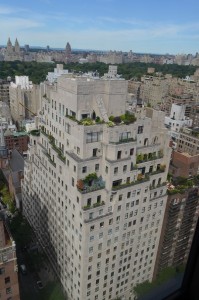
Rosario Candela & Arthur Loomis Harmon, arch. 1929
Monacelli Press has issued a new monograph on the work of Robert A. M. Stern Architects—one of a continuing series. This one is titled City Living, and it describes urban apartment houses, more than thirty of them. RAMSA is an eclectic firm, but the architectural style of these apartment towers is consistent, what New Yorkers call “prewar,” that is, pre-WWII. It appears that everybody wants “New York prewar” for the book describes built work not only in the major American cities—New York, Los Angeles, Chicago, Washington, D.C., Boston, Atlanta—but also in London, Moscow, Toronto, Lima, Shanghai, Chongqing, and Taipei. And why not? The upper-middle-class New York City apartment building of the 1920s remains the acme of civilized high-rise, high-density urban living. It successfully mediates between the street and the skyline, provides a sense of character that reflects—but does not overwhelm—its communal function, and gives the designer the freedom to lay out interesting unit plans. If you must have pencil-thin towers, and this disturbing building type seems unstoppable, then RAMSA’s 82-story 30 Park Place on Church Street in Lower Manhattan seems better than the alternatives.
